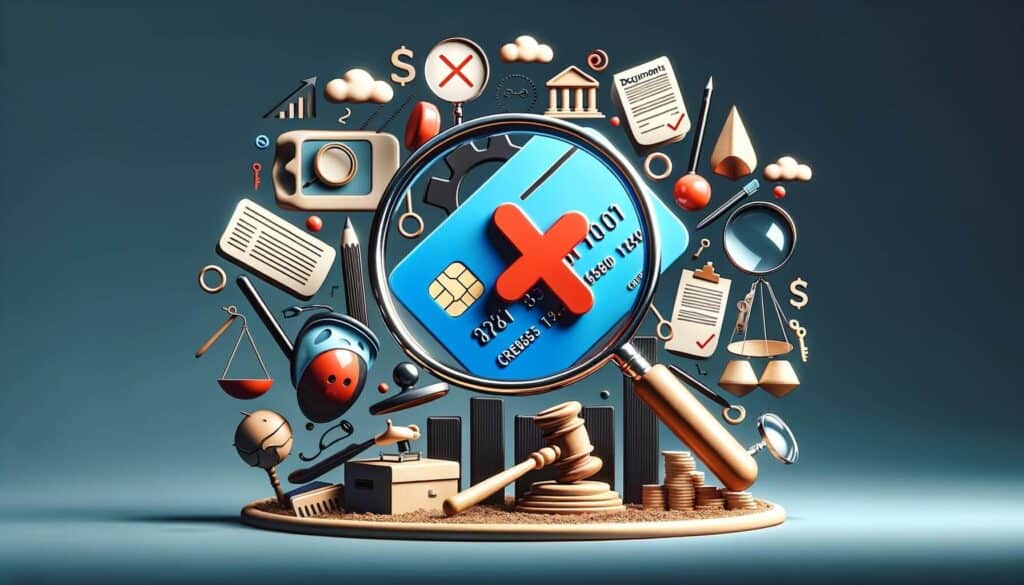
By Harriet Forster January 2, 2025
In today’s digital age, chargebacks have become a common occurrence in the world of commerce. Chargebacks are initiated by customers who dispute a transaction and request a refund from their bank or credit card issuer. While chargebacks are designed to protect consumers from fraudulent or unauthorized transactions, they can pose significant challenges for merchants. This is where chargeback representment comes into play.
Chargeback representment is the process by which merchants fight back against unjustified chargebacks and seek to recover lost revenue. It involves gathering compelling evidence, crafting persuasive arguments, and presenting a strong case to the issuing bank or card network. In this comprehensive guide, we will delve into the intricacies of chargeback representment, providing you with a detailed understanding of the process, its importance, and effective strategies to maximize your chances of success.
Understanding the Basics of Chargebacks

Before delving into chargeback representment, it is important to have a clear understanding of what chargebacks are and why they occur. A chargeback is a reversal of a credit card transaction initiated by the cardholder’s bank. It is typically requested by the cardholder when they believe there has been fraudulent activity, an error, or a dispute with a merchant.
Chargebacks can occur for various reasons, including unauthorized transactions, non-receipt of goods or services, dissatisfaction with the quality of goods or services, or billing errors. They are designed to protect consumers from fraudulent or unfair practices, but they can also be abused by dishonest customers.
The Importance of Chargeback Representment

Chargebacks can have significant financial implications for businesses. In addition to the loss of revenue from the disputed transaction, businesses may also incur chargeback fees and penalties imposed by the payment processor. Moreover, excessive chargebacks can lead to the termination of a merchant account, making it difficult for the business to continue accepting credit card payments.
Chargeback representment is crucial for businesses because it provides an opportunity to dispute invalid chargebacks and recover lost revenue. By effectively presenting evidence and documentation to support their case, businesses can increase their chances of winning the representment and having the chargeback reversed.
How Chargeback Representment Works
Chargeback representment involves a series of steps aimed at building a strong case to challenge the validity of a chargeback. Here is a detailed guide on how chargeback representment works:
1. Identify the chargeback reason code: Each chargeback is assigned a reason code that indicates the basis for the customer’s dispute. Understanding the reason code is crucial as it helps merchants tailor their representment strategy accordingly.
2. Gather compelling evidence: To successfully challenge a chargeback, merchants must gather compelling evidence that supports their case. This may include transaction records, customer communication, delivery confirmation, and any other relevant documentation.
3. Craft a persuasive representment letter: The representment letter is a crucial component of the chargeback representment process. It should clearly outline the merchant’s position, provide a detailed rebuttal to the customer’s claim, and present the gathered evidence in a concise and persuasive manner.
4. Submit the representment letter: The representment letter, along with supporting evidence, should be submitted to the merchant’s acquiring bank or payment processor. The bank will then forward the representment to the issuing bank or card network for review.
5. Monitor the representment process: After submitting the representment, merchants should closely monitor the progress of their case. This includes tracking the status of the chargeback, following up with the acquiring bank, and providing any additional information requested.
6. Evaluate the outcome: Once the representment process is complete, merchants should evaluate the outcome. If successful, the chargeback will be reversed, and the merchant’s account will be credited. However, if the representment is unsuccessful, merchants may consider alternative dispute resolution methods or accept the loss.
Step-by-Step Guide to Chargeback Representment Process
Now that you have prepared for chargeback representment, let’s dive into a step-by-step guide on how to effectively navigate through the process:
1. Receive chargeback notification: When a chargeback is initiated, the merchant receives a notification from their payment processor or acquiring bank.
2. Gather relevant information: Collect all relevant information and documentation related to the disputed transaction, including order details, shipping information, and customer communication.
3. Analyze the chargeback reason: Carefully review the reason provided by the cardholder for the chargeback and identify any discrepancies or inconsistencies.
4. Prepare a representment letter: Draft a comprehensive representment letter that clearly outlines the reasons why the chargeback is invalid and provides supporting evidence to refute the cardholder’s claims.
5. Submit the representment letter: Send the representment letter, along with the supporting documentation, to the payment processor or acquiring bank for review.
6. Follow up with the bank: Stay in regular communication with the bank to ensure that the representment is being processed and to provide any additional information or documentation that may be requested.
7. Await the bank’s decision: The bank will evaluate the merchant’s case and the cardholder’s claims before making a decision on whether to reverse the chargeback.
8. Monitor the representment status: Keep track of the representment status and any updates provided by the bank. This will help determine if further action is required.
9. Take necessary action: If the chargeback is reversed in favor of the merchant, the funds will be returned to their account. If the chargeback is not reversed, the merchant may consider other options, such as arbitration or legal action.
10. Learn from the experience: Regardless of the outcome, it is important to analyze the reasons behind the chargeback and identify any areas for improvement in order to prevent future chargebacks.
Common Mistakes to Avoid in Chargeback Representment

While chargeback representment can be an effective way to dispute invalid chargebacks, there are several common mistakes that merchants should avoid to maximize their chances of success. These mistakes include:
1. Lack of documentation: Failing to gather and provide sufficient documentation to support the merchant’s case can weaken the representment and reduce the chances of winning.
2. Inadequate response time: Delaying the submission of the representment letter can result in missed deadlines and a higher likelihood of the chargeback being upheld.
3. Poor communication with the bank: Failing to maintain regular communication with the bank can lead to misunderstandings and delays in the representment process.
4. Ignoring chargeback trends: Not analyzing and addressing recurring chargeback issues can result in a higher number of chargebacks and a negative impact on the business’s bottom line.
5. Inconsistent record-keeping: Poor record-keeping practices can make it difficult to gather the necessary information and documentation for chargeback representment.
Strategies for Successful Chargeback Representment
To increase the chances of success in chargeback representment, merchants should employ effective strategies tailored to their specific circumstances. Here are some strategies to consider:
1. Maintain meticulous transaction records: Accurate and detailed transaction records are essential for chargeback representment. Merchants should ensure they have a robust system in place to store and retrieve transaction data, including customer information, purchase details, and delivery confirmation.
2. Respond promptly to chargeback notifications: Timeliness is crucial in chargeback representment. Merchants should respond promptly to chargeback notifications, ensuring they meet the required deadlines for submitting representment documentation.
3. Understand reason codes and dispute regulations: Familiarize yourself with the various reason codes and dispute regulations specific to your industry. This knowledge will help you tailor your representment strategy and provide compelling arguments to challenge the chargeback.
4. Strengthen customer communication and support: Proactive customer communication and exceptional customer support can help prevent chargebacks in the first place. By promptly addressing customer concerns and resolving issues, merchants can minimize the likelihood of disputes escalating to chargebacks.
5. Collaborate with payment processors and acquiring banks: Establish a strong partnership with your payment processors and acquiring banks. They can provide valuable insights, guidance, and resources to navigate the chargeback representment process effectively.
Tools and Resources for Effective Chargeback Representment
Several tools and resources are available to assist merchants in effectively navigating the chargeback representment process:
1. Chargeback management software: Chargeback management software can automate and streamline the representment process, making it easier to gather and submit the necessary documentation.
2. Payment processor support: Many payment processors offer support and guidance for chargeback representment, including access to representment templates and best practices.
3. Industry associations and forums: Joining industry associations and participating in online forums can provide merchants with valuable insights and advice from peers who have experience with chargeback representment.
4. Chargeback prevention services: Some companies specialize in chargeback prevention and representment services, offering expertise and support to merchants in disputing chargebacks.
Frequently Asked Questions about Chargeback Representment
Q1. What is the time limit for submitting a chargeback representment?
The time limit for submitting a chargeback representment varies depending on the payment processor and the reason for the chargeback. It is important to review the specific guidelines provided by the payment processor and submit the representment within the specified timeframe.
Q2. Can a chargeback be reversed without representment?
In some cases, a chargeback may be reversed without the need for representment. This can occur if the cardholder’s bank determines that the chargeback was filed in error or if the merchant provides sufficient evidence to support their case during the initial chargeback process.
Q3. What are the potential costs associated with chargeback representment?
The costs associated with chargeback representment can vary depending on the payment processor and the specific circumstances of the chargeback. In addition to the time and resources required to gather and submit the necessary documentation, merchants may also incur representment fees imposed by the payment processor.
Q4. Can chargeback representment guarantee a successful outcome?
While chargeback representment can significantly increase the chances of a successful outcome, it does not guarantee that the chargeback will be reversed. The final decision rests with the cardholder’s bank, and there may be factors beyond the merchant’s control that influence the outcome.
Conclusion
Chargeback representment is a critical process for businesses that accept credit card payments. By understanding the basics of chargebacks, the importance of chargeback representment, and how the process works, merchants can effectively dispute invalid chargebacks and recover lost revenue.
Following a step-by-step guide to chargeback representment, avoiding common mistakes, and implementing strategies for success can increase the likelihood of a favorable outcome. Utilizing tools and resources, such as chargeback management software and payment processor support, can further enhance the effectiveness of chargeback representment.
While chargeback representment does not guarantee a successful outcome, it is an essential tool for businesses to protect their revenue and reputation in the face of chargebacks. By staying informed, proactive, and diligent in the representment process, merchants can maximize their chances of success and minimize the impact of chargebacks on their business.